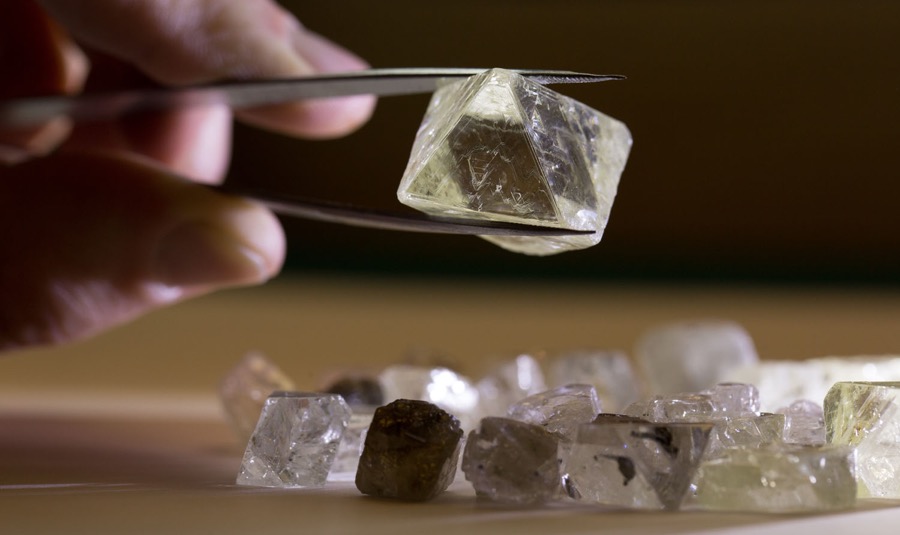
Concerned about the increasing threat than synthetic diamonds entering the supply chain represent to those who mine the real thing, Russia’s Alrosa (MCX:ALRS), has developed a detection device that verifies the authenticity of polished gems.
The instrument was created by the diamond miner, the world’s No.1 producer by output, and the Technological Institute for Superhard and Novel Carbon Materials, Alrosa said in a statement.
The novel gadget can identify natural polished diamonds, polished rocks manufactured from synthetic and treated diamonds, as well as non-diamond imitations (simulants), such as cubic zirconia and moissanite.
Weighing less than 1.5 kg, the device is very easy to use, said Alrosa, adding that it’s planning to begin selling it next year.
2 Comments
Altaf
Good technological development. It will reduce the amount of cheating that goes on in the business.
However it will not reduce the sale of such gems.
Many people believe Lab created gems to be same as a natural gem. Its like a banana from a farm compared to a banana from a forest.
Simulants are a different game. In a comparitive example, if some customer decides to buy a mango and if the seller hands him a rotten fish insisting that its a mango, the device will help. If the customer knows its a banana and want to buy a banana, the device will simply confirm that its a banana.
HarBout
Such devices should not even be necessary if all the people involved in the downstream diamond value chain (pipeline) are holding up to a proper code of ethics, but pity enough there are always rotten apples in the basket. Also the industry should stop to cover each other for misbehavior and taken proper legal actions for misleading buyers (consumers) by miss-presenting their products, such as selling laboratory-grown diamonds for natural diamonds.
Major diamond producers and their association should stop to use suggestive words such as the real thing as the consumers are no idiots and are nowadays well informed on the products they want to buy. By putting too much the accent on the “threat” of lab-grown diamonds they create the curiosity of people who at the end will realize that lab-grown diamonds are diamond, real diamond, but, not mined or natural diamonds.
The sole fact that laboratory grown diamonds are considered by the dominant diamond miners as a growing threat underpins the above statement that laboratory grown (lab-grown, man-made, …) diamond is “diamond” which is carbon arranged in an isometric structure the same the natural or mined diamonds are carbon arranged in an isometric structure.
It is also important that the Producers Association and their members put things in perspective. In the last 15+ years the threat of lab-grown diamonds has been object of a lot of talk, studies, … and the perceived threat has pushed some to start a terminology fight in order to impose the term synthetic. Also this word can be challenged by diamond-growers, but this will be a new subject for another time.
The reality is that every year 40 million polished carats are produced by the participants in the natural diamond industry. On the other side, diamond-growers are not even producing ½ million carats of polished diamonds, ie. which is not even 1.25% of the total polished production. What are we talking of??? What can this quantity do to threaten the largest producer???
What major diamond miners should do is facing reality that lab-grown diamonds will have their place and will be part of the jewelry industry, and, continuing to fight this by trying to make negative publicity or putting lab-grown diamonds in a negative day-light, will not help to eliminate this reality. Consumers will judge and decide, …!